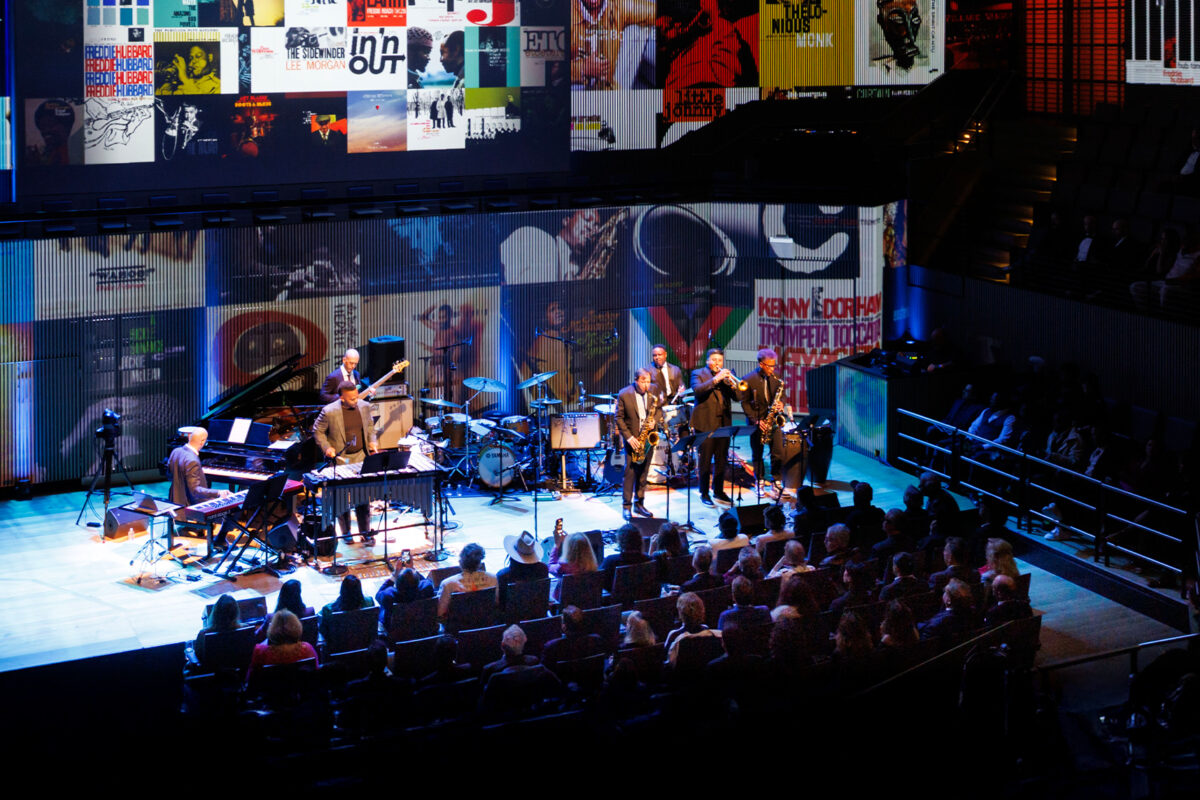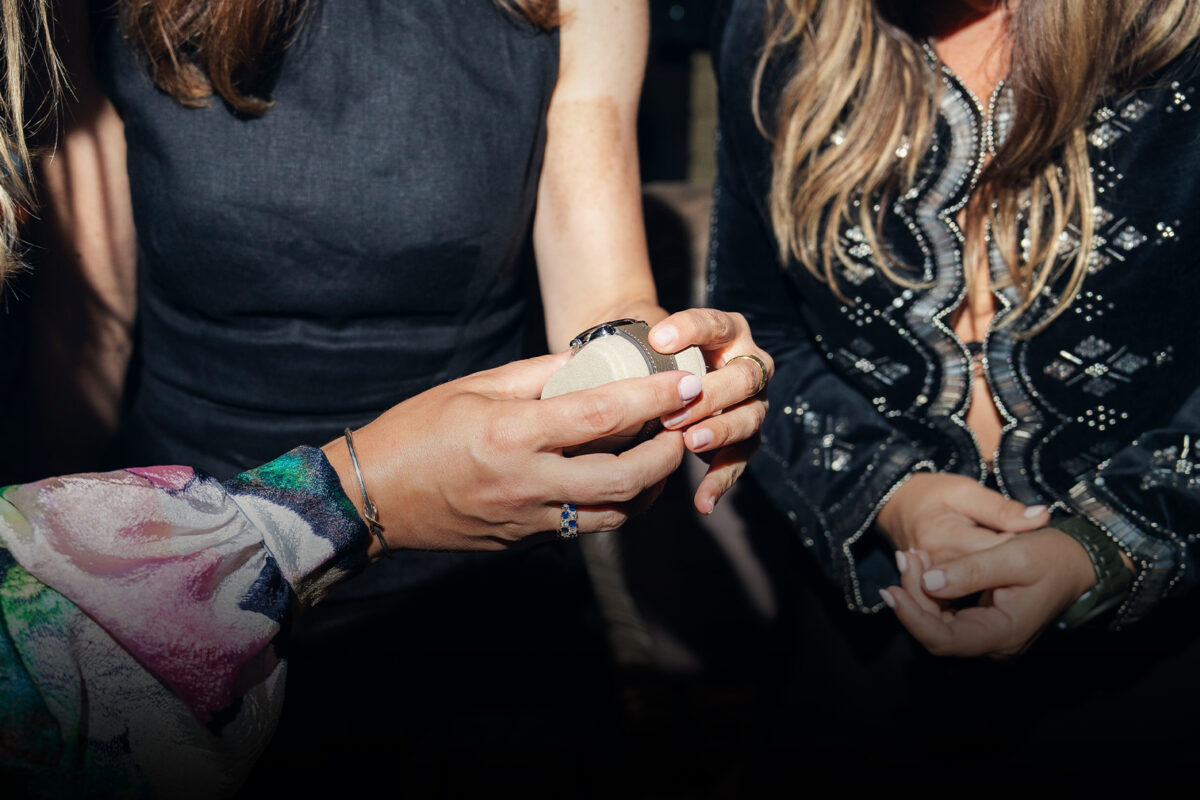Conserving the island for future generations is a labor of love for the Wrigley dynasty. In an exclusive interview, they share their plan for their Pacific paradise
Words by CHRISTINE LENNON
Photography by KURT ISWARIENKO
From the terrace at Mt Ada bed and breakfast — the former residence of the late William Wrigley Jr., Catalina Island’s famous owner and developer, who built the home in his wife’s name in 1921 — you can see the entire postcard-perfect town of Avalon.
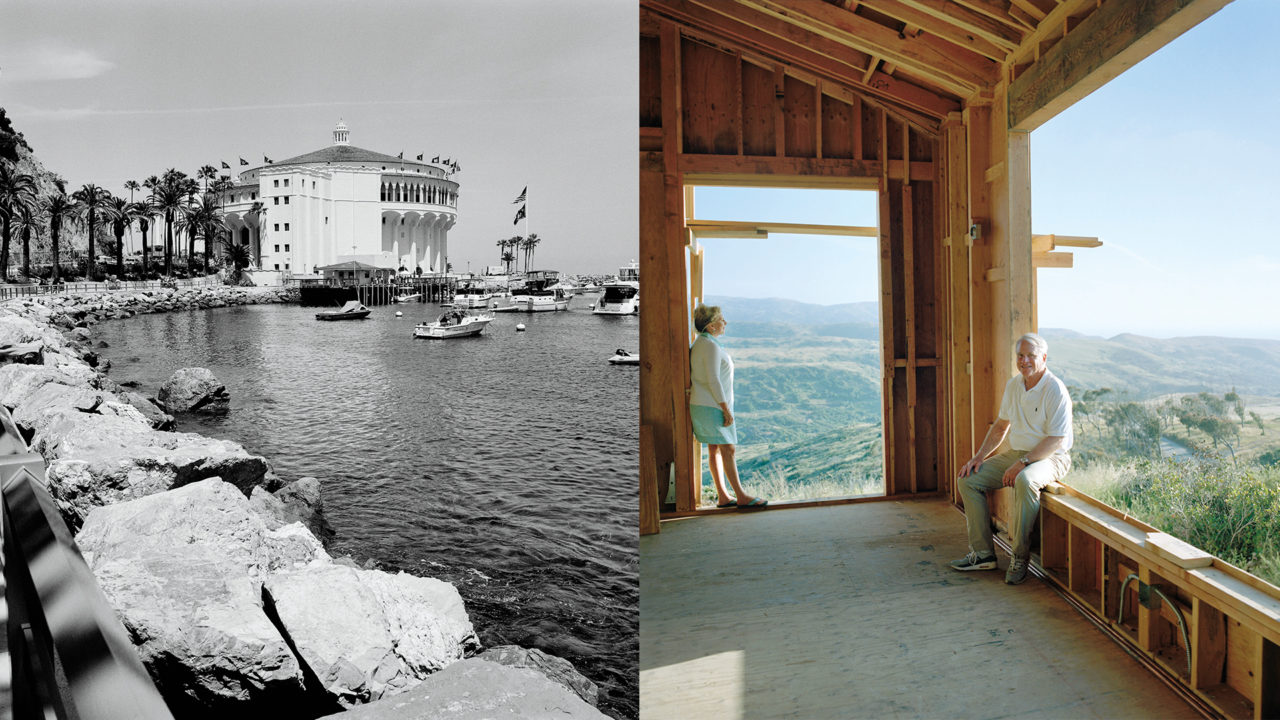
From left: The Catalina Casino. ALISON WRIGLEY RUSACK and GEOFF RUSACK in the soon-to-be chapel in the hills above El Rancho Escondido, where couples will be able to exchange vows overlooking Catalina.
Golf carts buzz around the nearly 3-square-mile city grid, each narrow lane lined with small, pastel beach cottages and quaint restaurants. A few dozen sailboats are anchored in the crescent-shaped, deep blue harbor. At the far end of town stands the Catalina Casino that was built in 1929 as an art deco theater and grand ballroom. From this height and distance, Avalon looks like a model of a California beach town, frozen in time, unspoiled by the noise and chaos of modern life. None of this happened by chance. For a hundred years, the descendants of the Chicago-based chewing gum magnate have cultivated this community, about 22 miles off of the coast of Los Angeles, navigating the balance between growth and preservation.
“If you look on the hill over there, you can see my grandparents’ house,” says Alison Wrigley Rusack, Wrigley’s great-granddaughter. She’s pointing across the bay to a modest, two-story Spanish-style villa, where she and her husband, Geoff Rusack, stay when they’re on the island. Alison, 60, is heavily involved in the business of running the island, and likes to ponder how the three generations of her family before her spent time there together. “I always imagined that they had really good binoculars so they could wave to each other.”
Alison has been coming here her entire life, and it seems she has a story for every corner of this island. Since the early ’90s, she and Geoff, a former aviation lawyer and defense attorney, shuttled their three (now grown) sons, Hunter, Austin and Parker, here from their former home in Mandeville Canyon for boating and spearfishing in the crystal-clear surrounding waters. But for Alison, the island is more than a sunny retreat. It’s her family legacy, and she has spent her adult life trying to walk the line between posterity and profit. “My family first set foot on Catalina 100 years ago,” she explains. “Each generation has been captivated by its magic. We have also focused on the importance of Catalina functioning as a business. That has made it possible to share the island with fun-seekers and preserve its wild beauty.”
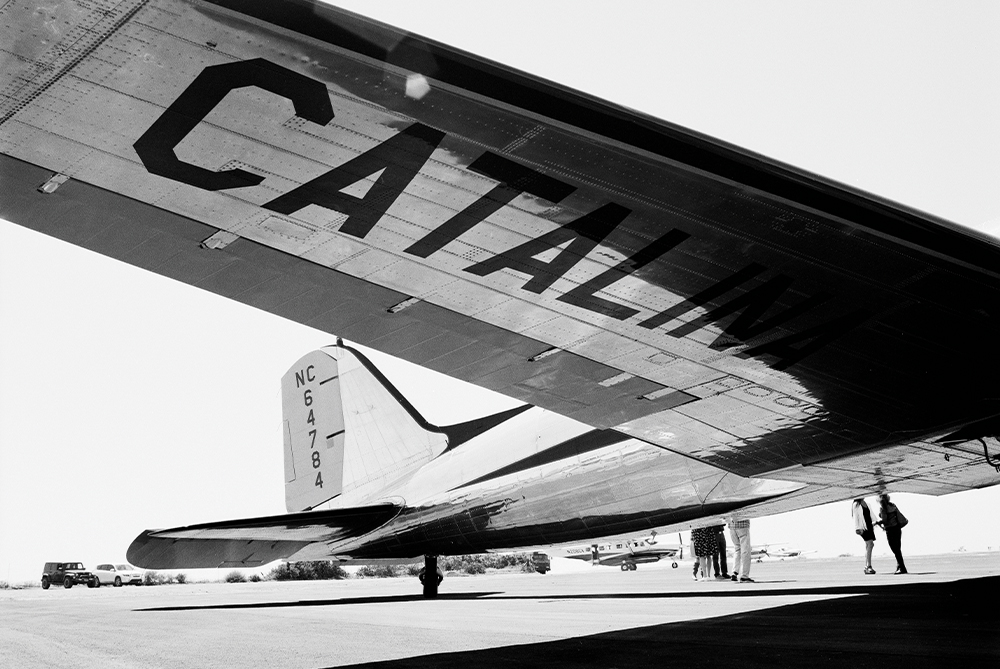
A newly restored 1944 DC-3 plane once belonging to Alison’s grandparents, Philip and Helen Wrigley, made the first landing at the grand reopening of Catalina’s airport in May.
“My family first set foot on Catalina 100 years ago”
Alison Wrigley Rusack
Alison and Geoff have devoted over 25 years to ensuring the island’s success. Geoff is the executive chairman of the Catalina Island Company, which oversees hotels, restuarants, camping, activities and more across the island. She is the vice chairman and vice president of the company, and a lifetime benefactor of the Catalina Island Conservancy, where Geoff also serves on the Board of Directors.
Alison’s father passed away suddenly in 1999, and by 2008, the Wrigley company was sold to candy giant Mars for a reported $23 billion. Assets were divided among the shareholders, including Alison and her two brothers, Philip and Beau, and Alison eventually took a leading role in the business of running the island. Having so far resisted the temptation to usher in a massive luxury resort trend, the Rusacks have instead opted for a more accessible approach, with campsites averaging around $30 per person per night and simple hotel rooms for $200 to $500 per night, depending on the season. A private home costs anywhere between $600,000 and $3 million; Catalina Island has approximately 4,000 year-round residents, most of whom live within Avalon city limits. “In the peak summer season, the company employs between 800 and 900 people here,” Geoff explains.
When the couple met, Alison was a recent Stanford graduate working as a junior entertainment executive and Geoff was a young associate at an L.A. law firm. Raised in Los Angeles (his father was Bishop Robert Rusack of the Episcopal Diocese of Los Angeles), Geoff had graduated from Bowdoin College in Maine and returned to attend law school at Pepperdine University. They were set up by an associate at Geoff’s law firm, and on the couple’s second date, they explored the unspoiled valleys on the island, lush with coastal sage and manzanita, by horseback and dreamed of planting grapes there. Fast-forward 36 years and today they run Rusack Vineyards in the Santa Ynez Valley, having started to cultivate grapes on Catalina in 2007. On the island, they grow chardonnay and pinot noir vines, as well as a rare variety of coastal zinfandel that was replanted from an abandoned vineyard dating from the late 19th century on nearby Santa Cruz Island.
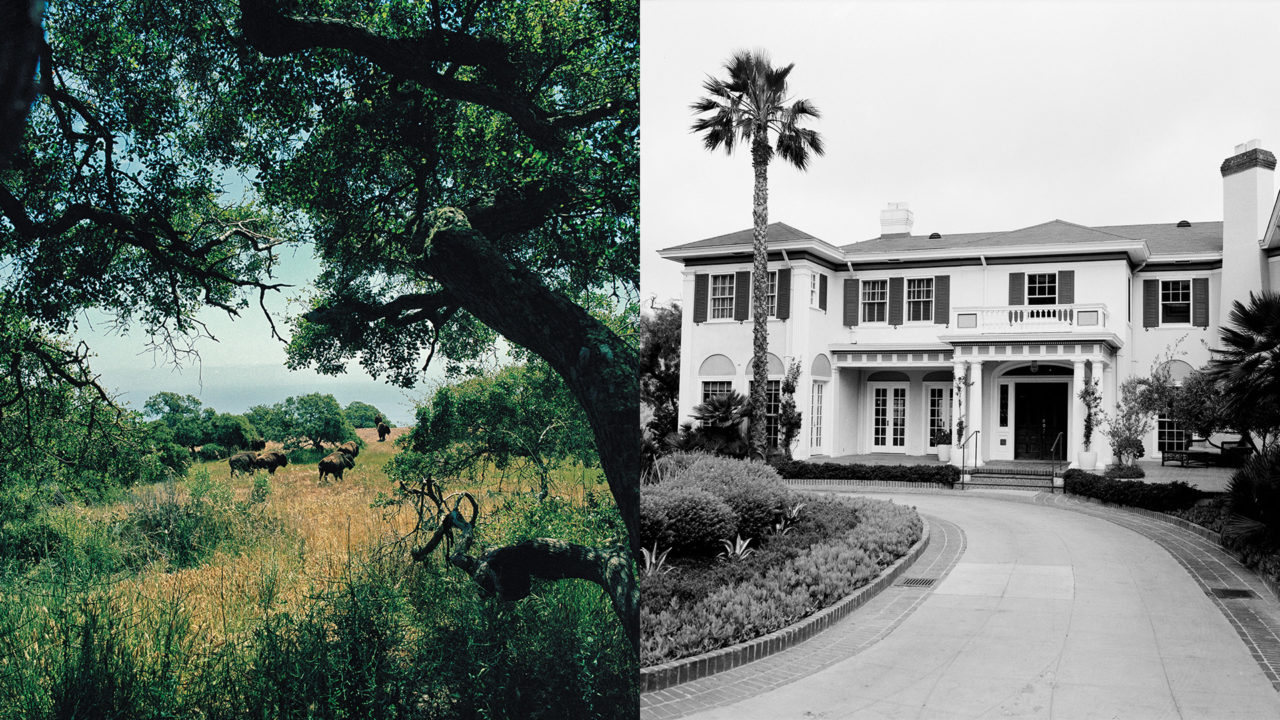
From left: Bison are said to have been originally brought to Catalina during filming for the 1924 film The Vanishing American and have roamed the island ever since. The entrance to Mt Ada bed and breakfast.
“Each generation has been captivated by Catalina’s magic”
Alison Wrigley Rusack
“It’s a complicated place,” says Geoff, who is equally as interested and engaged in the history of the island as his wife. Long before the Wrigleys, Native Americans inhabited Catalina for generations. Spanish explorers landed on its shores in 1542, and it subsequently became a base for otter hunters, miners and smugglers. In 1846, it was traded as part of a Mexican land grant, and years later developed into a resort destination under the ownership of the Banning brothers, who founded the Catalina Island Company in 1894 before selling it to William Wrigley Jr. in 1919.
“When you read about Alison’s great-grandfather, and all of the challenges he faced here, like building roads, providing housing for the people who work here, installing a power grid, conserving water — these are all the same issues we’re dealing with today,” Geoff says.
Through their company, the Rusacks manage a steady stream of tourists who arrive by ferry, including families looking for a beach getaway and hundreds of students visiting on school trips to learn about marine ecology through a program organized by the University of Southern California. The Rusacks are also working to preserve the unique natural heritage of this rare piece of relatively untouched land. The island is home to an endangered breed of fox and a large herd of free-roaming bison, the latter said to have been originally brought in for the production of the western film The Vanishing American (made after the Zane Grey novel), which was filmed there in 1924.
“In 1972, my father established the conservancy and deeded much of the land on the island as a nature preserve,” Alison explains from the sitting room at Mt Ada, furnished with traditional upholstered chairs and game tables, and candy dishes filled with Wrigley’s Spearmint gum. The conservancy protects 88 percent of the island outside Avalon (Catalina Island Company owns 11 percent). “The goal is to share the island but also protect it. And sometimes those two ideas are at odds.”
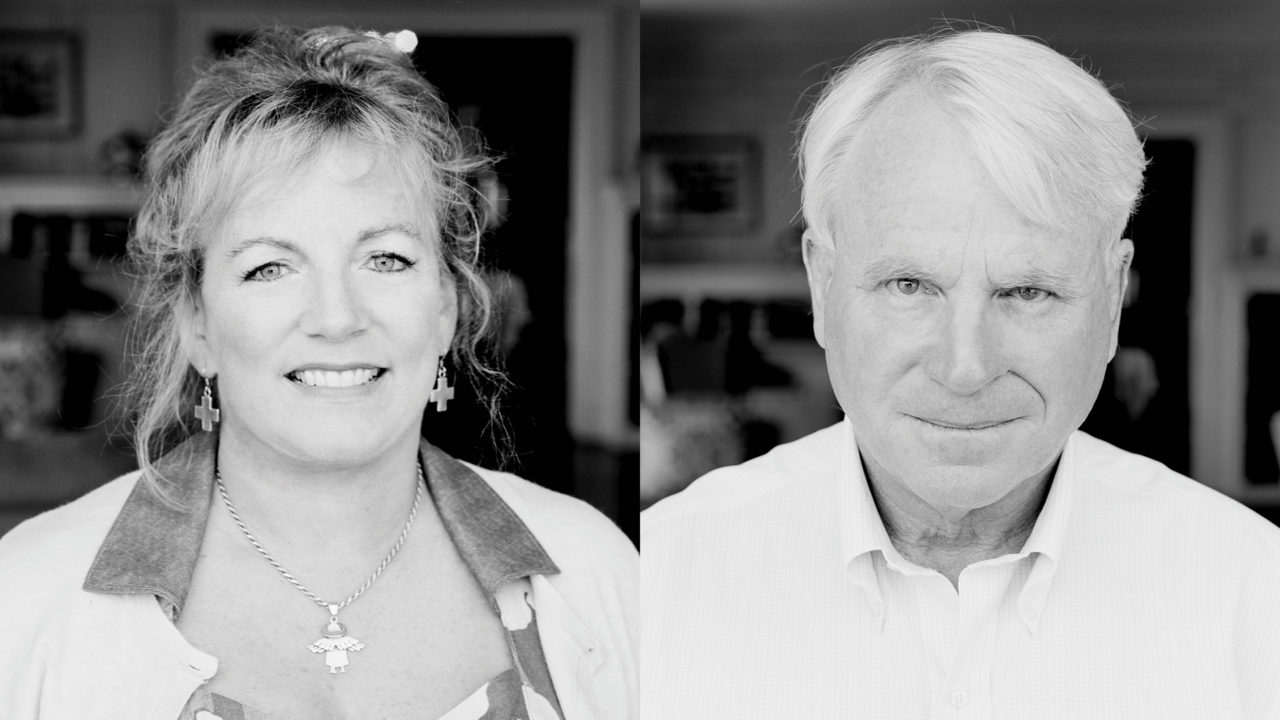
ALISON WRIGLEY RUSACK (left) and GEOFF RUSACK.
“The goal is to share the island but also protect it”
Alison Wrigley Rusack
Regulations restrict the number of cars on the island to 500, and the waiting list to bring new full-size vehicles over is rumored to be longer than 25 years. Each residence is allotted one golf cart, which owners and vacationers use to navigate the narrow roads and make runs to the new Vons supermarket (a long-awaited upgrade for the community championed by the Rusacks). A marine research outfit, campgrounds, and a rustic hotel and restaurant serving local seafood and family-friendly basics can be found on the northeast shores in Two Harbors. Shuttles deliver adventurous visitors to the five campgrounds and various trailheads, which provide access to more than 150 miles of hiking bliss through the breezy, rolling hills with unobstructed views of the Pacific in every direction. There are 17 campsites at nine locations that are accessible only by boat. The waters surrounding the island are famous spots for scuba diving, and there are dozens of land and sea tours available. A refreshed airport, a new zip line adventure, the revitalization of the Descanso Beach Club (a waterfront restaurant, bar and beach club), and the full restoration of the Hotel Atwater that’s to be completed in August are all part of the family’s ongoing efforts to upgrade and modernize. Their goal for the next 100 years is to carefully manage change and protect this portion of California’s rapidly diminishing wildlands — celebrating a simpler, pre-theme park era in California’s past.
While the Rusacks’ sons are not involved in the management company yet — Hunter just received his MBA, Austin is a photographer and Parker is in the Navy — conversations about Catalina and their unique family relationship with the island are frequent. “We don’t want to put pressure on them or make them feel like it’s an expectation to take over the business,” Alison says. “But we talk about it with them and share our experiences, in the way my father did with us.”
To hear her talk about the thrill of landing on the airport’s new runway in a restored DC-3 that once belonged to her parents, it’s clear the 74-square-mile landmass is more than just a business venture. She takes pride in her role as the heir who has taken on the task of family historian and the opportunity to share the island with generations to come. “When you get away from the crowds, the landscape looks like California must have a hundred years ago. It’s one of the things that makes it so unique,” Alison says. And she intends to keep it that way.
Feature image: A picturesque view of the rolling hills and shores of CATALINA ISLAND.
This story originally appeared in the Summer 2019 issue of C Magazine.
Discover more CULTURE news.

